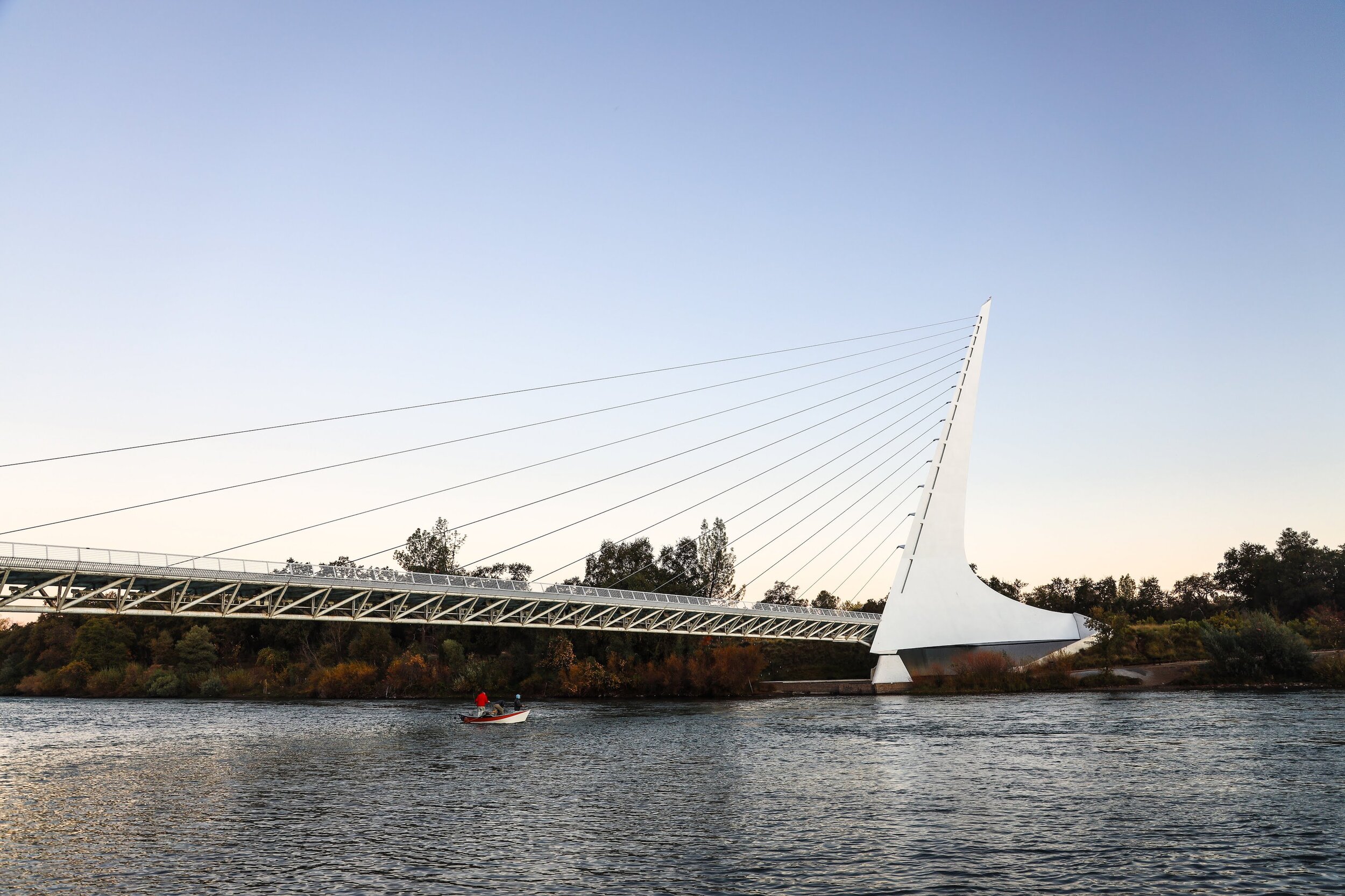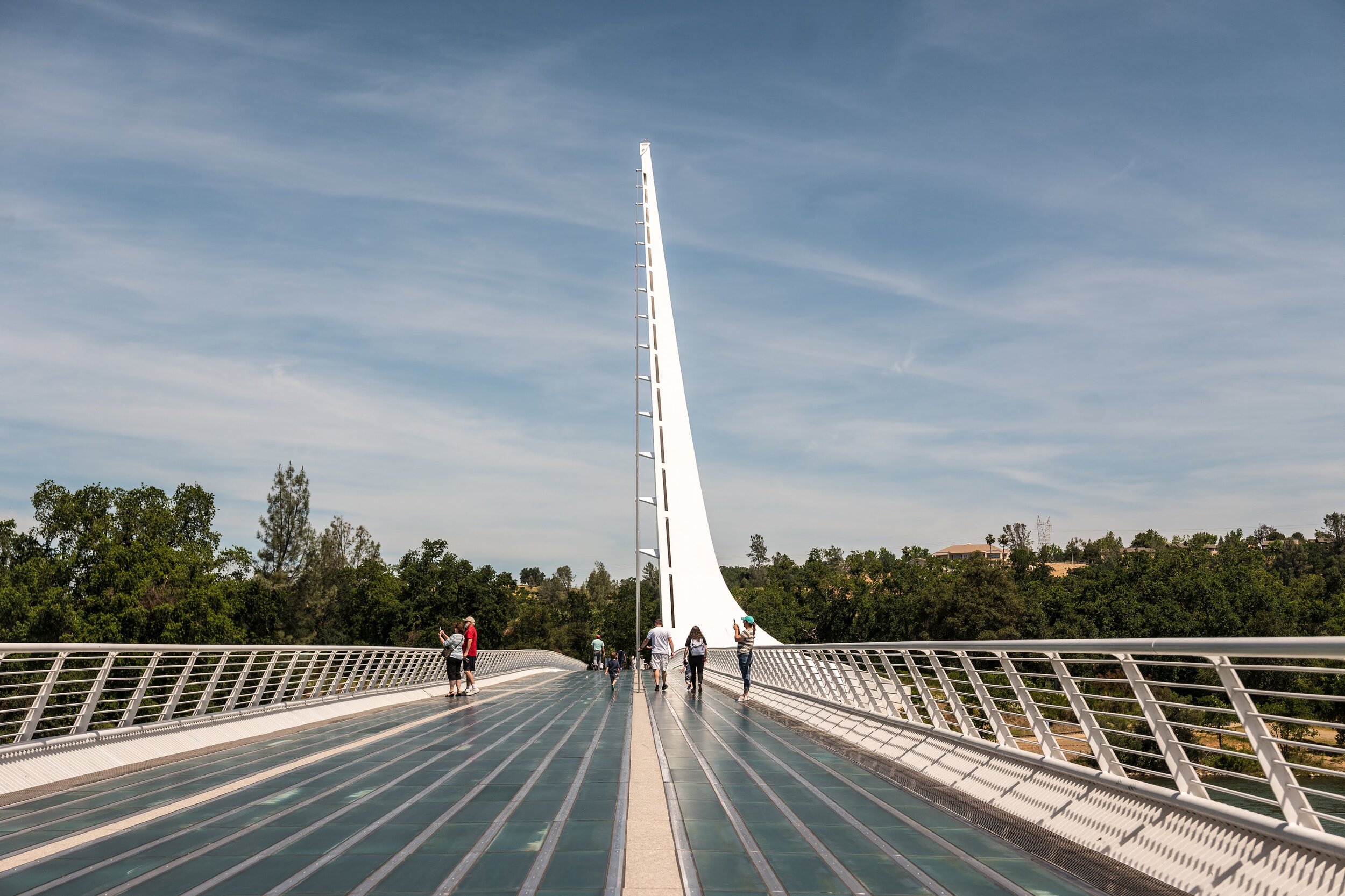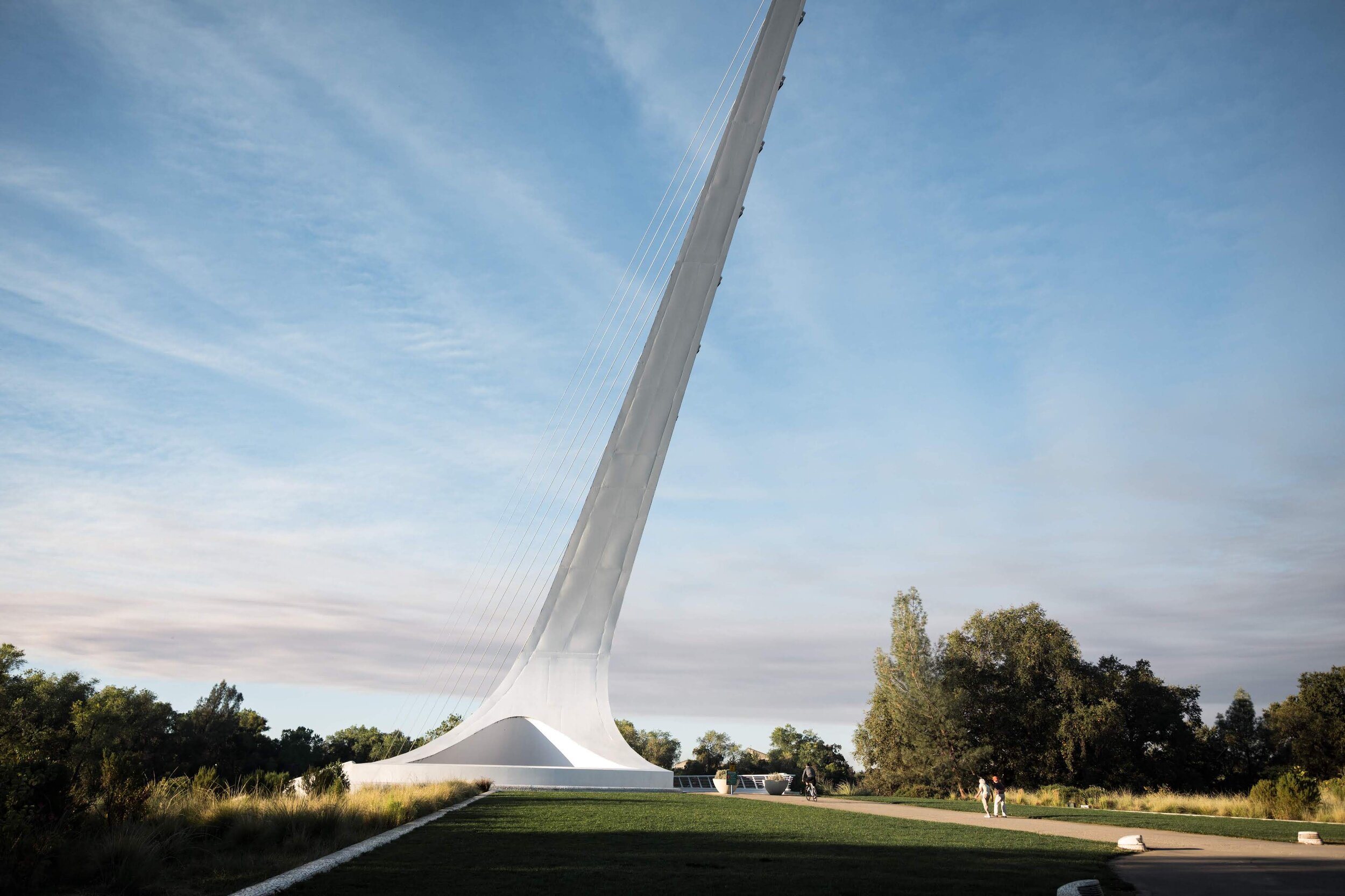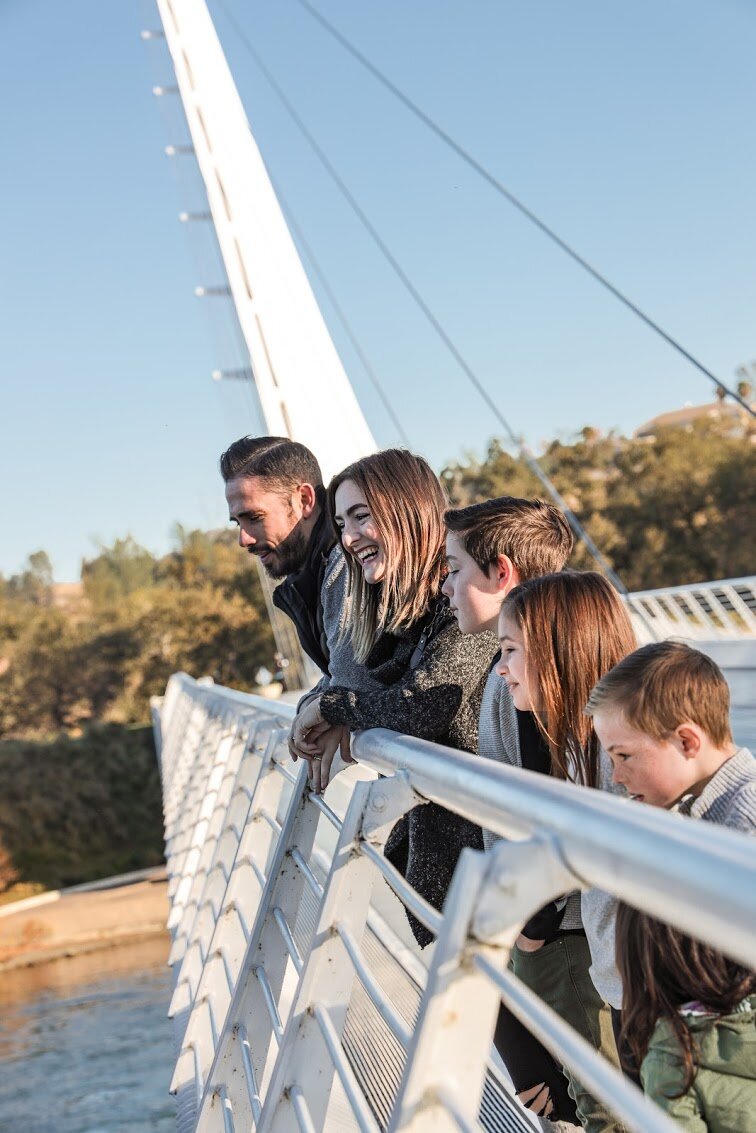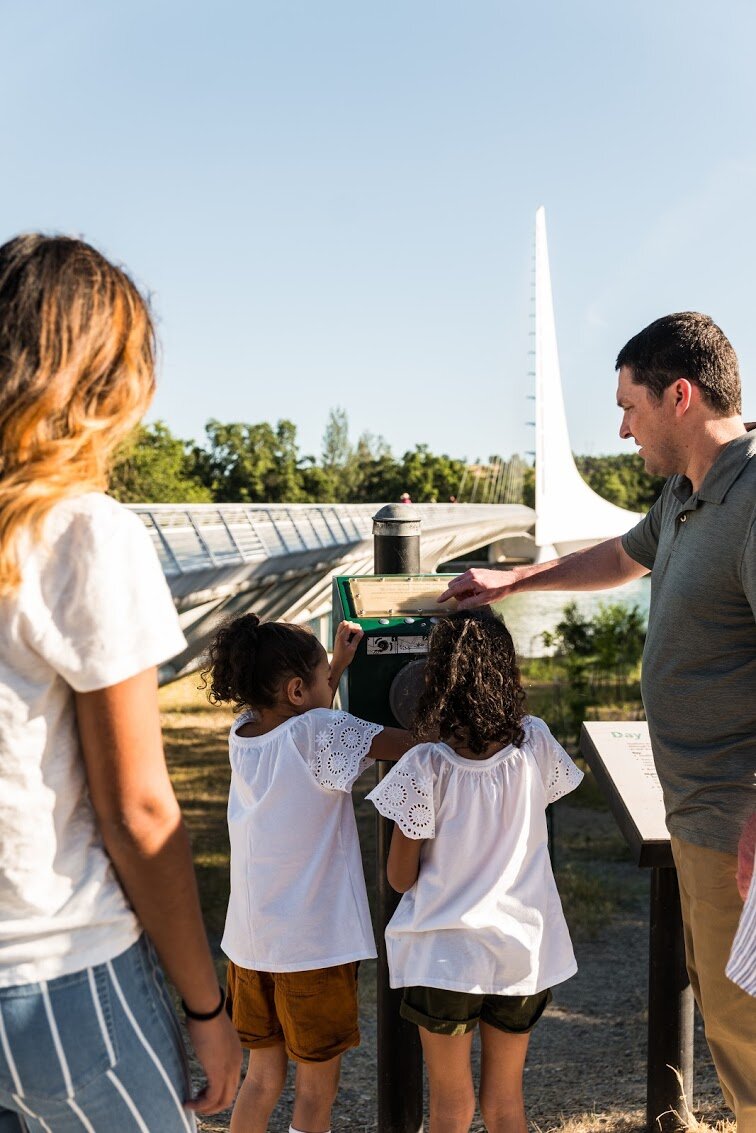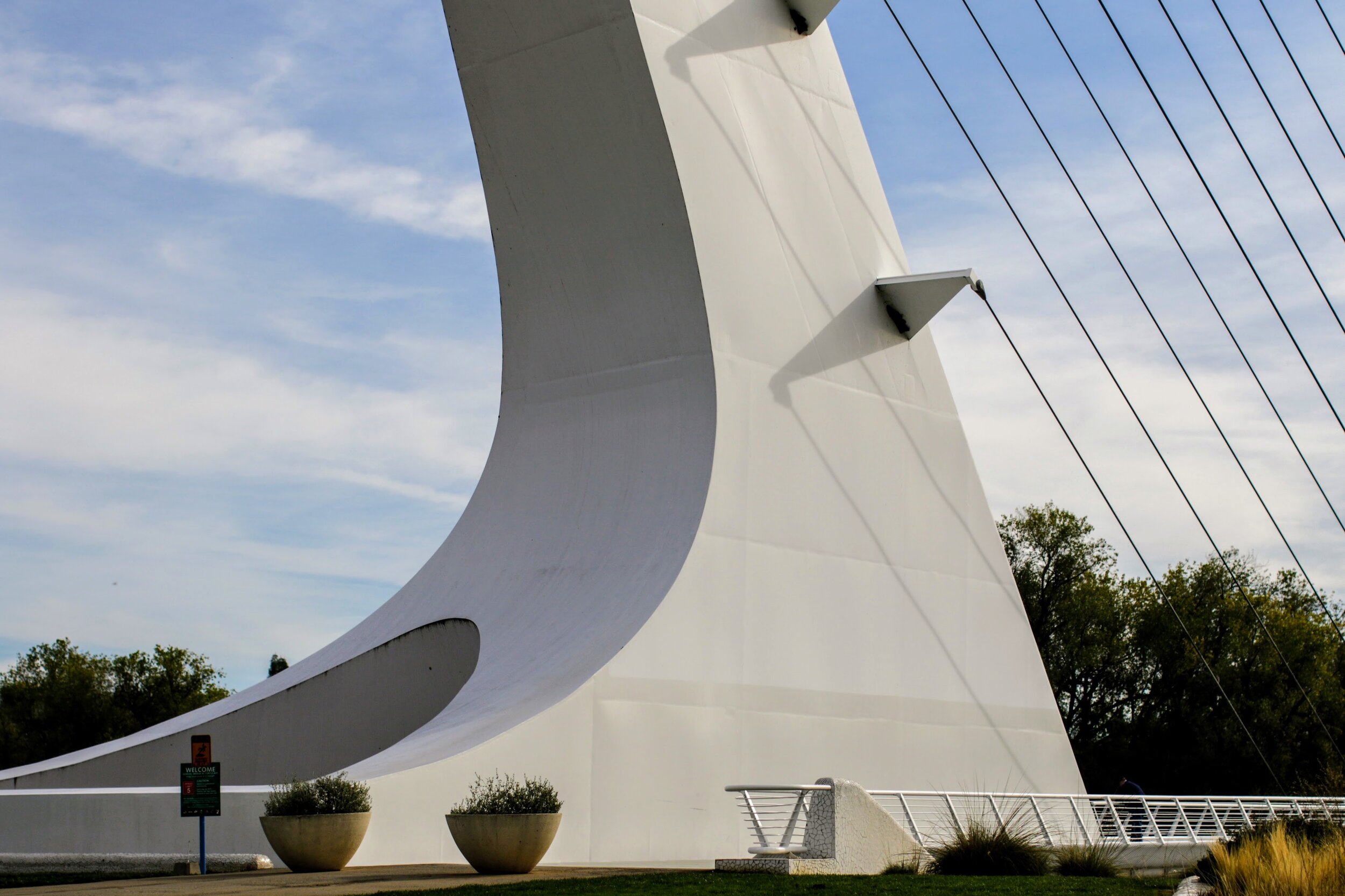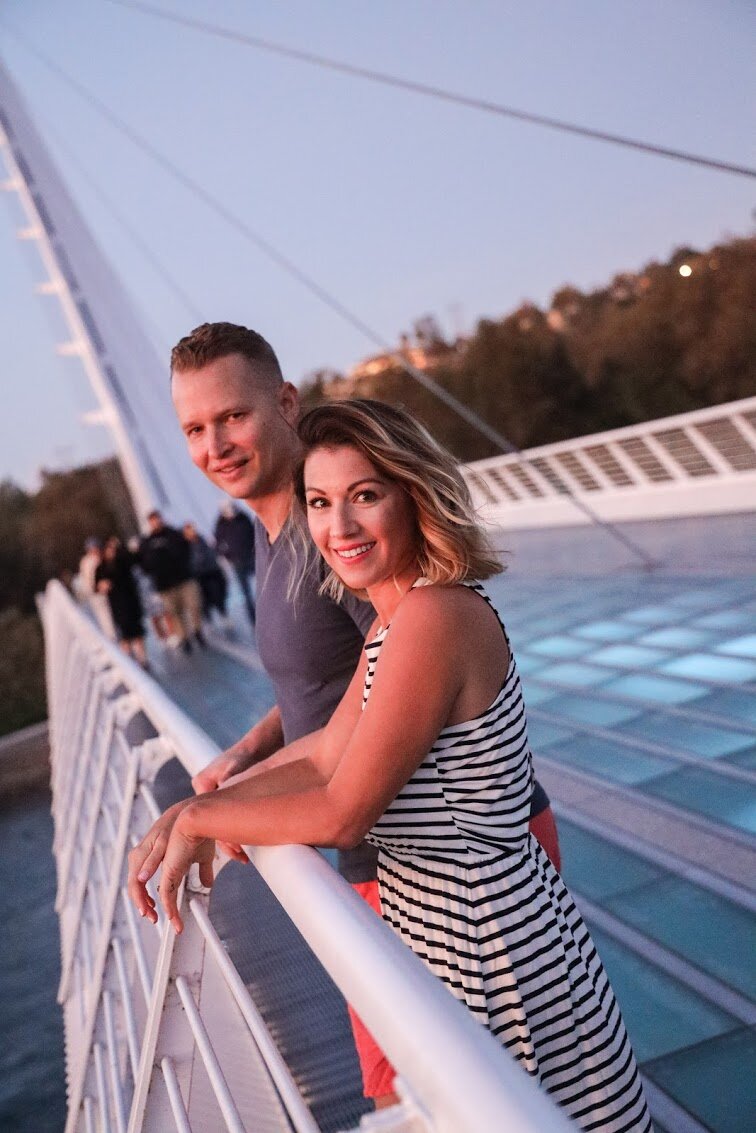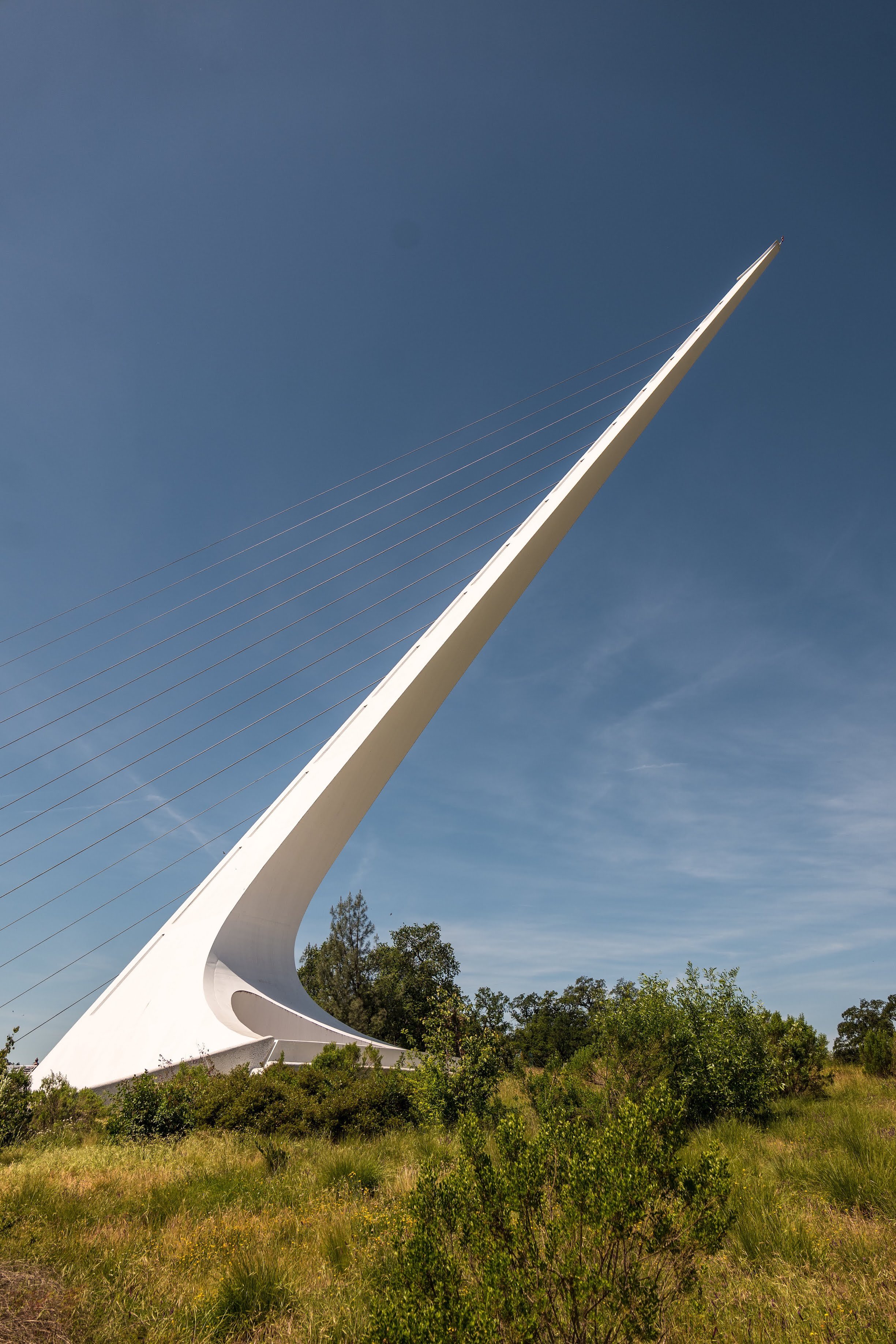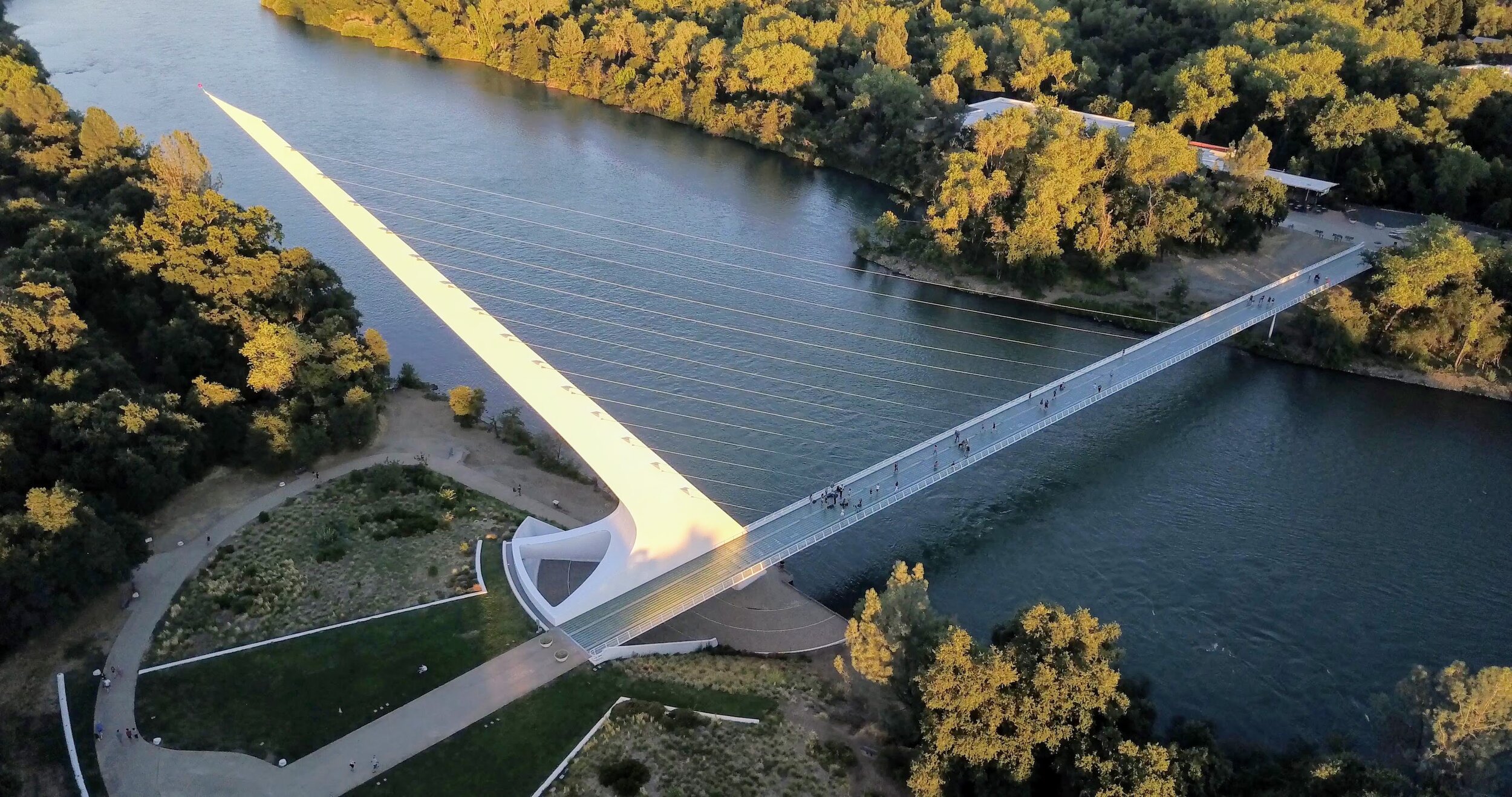Sundial Bridge
The Sundial Bridge at Turtle Bay is a world-famous pedestrian bridge and public art installation that crosses the Sacramento River in Redding and connects the north and south campuses of Turtle Bay Exploration Park.
Sundial Bridge at Turtle Bay
Free & open to the public daily
The Sundial Bridge at Turtle Bay crosses the Sacramento River in the heart of Redding, California. Opened July 4, 2004, the bridge links the north and south campuses of Turtle Bay Exploration Park and serves as a new downtown entrance for Redding’s extensive Sacramento River Trail system. Access to the Sundial Bridge and surrounding river trails are free to the public. Paid access areas include Turtle Bay’s Museum, Forest Camp, Wildlife Woods, and Botanical Gardens.
As the name suggests, the Sundial Bridge is, in fact, a working sundial and is one of the largest in the world. The sundial shadow traces such a large arc that it can record only four hours a day, from 11am - 3pm. It is not accurate in winter because the shadow is too far into the arboretum to be seen. The shadow, when visible, moves about one foot per minute, so you can readily see it move.
The bridge celebrates human creativity and ingenuity, important themes of the 300 acre Turtle Bay Exploration Park. The steel, glass, and granite span evokes a sense of weightlessness and the translucent, non-skid decking provides for spectacular viewing at night. The bridge is also environmentally sensitive to its river setting. The tall pylon and cable stays allow the bridge to avoid the nearby salmon-spawning habitat as there are no supports in the water while encouraging public appreciation for the river. Plazas are situated at both ends of the bridge for public use; the north-side plaza stretches to the water allowing patrons to sit at the river’s edge.
In addition to being a functional work of art, the Sundial Bridge is a technical marvel as well. The cable-stayed structure has an inclined, 217 foot pylon constructed of 580 tons of steel. The deck is made up of 200 tons of glass and granite and is supported by more than 4,300 feet of cable. The structure is stabilized by a steel truss, and rests on a foundation of more than 115 tons of steel and 1,900 cubic yards of concrete. The McConnell Foundation, a private, independent foundation established in Redding in 1964, funded the majority of the bridge’s $24 million cost.
World renowned Spanish architect and engineer Santiago Calatrava conceived the Sundial Bridge’s unusual design, his first free-standing bridge in the United States. Calatrava has built bridges, airports, rail terminals, stadiums, and other structures around the world. His notable designs include the new PATH transportation terminal at the World Trade Center site in New York City and several projects at the 2004 Olympic Games in Athens, Greece, including the main stadium where opening and closing ceremonies were held.
About the Designer
The design for the Sundial Bridge was conceived by Spanish architect Santiago Calatrava, the world’s premier bridge designer. Calatrava has built bridges, airports, rail terminals, stadiums, and other structures around the world. Though he recently completed a major expansion of the Milwaukee Art Museum, and has been selected to design the new Oakland Cathedral, this is his first freestanding bridge in the United States.
SUNDIAL BRIDGE STATISTICS
Completion And Opening
July 4, 2004
Dimensions
700 feet long x 23 feet wide x 217 feet high (pylon)
Weight
3.2 million pounds (1,600 tons)
Materials
Steel structure with galvanized steel cables, Non-skid glass panels in steel framework, granite accents
Foundation
115 tons of rebar and 1,900 cubic yards of concrete
Superstructure
400 tons of steel and 200 tons of glass and granite (deck)
Cables
4,342 feet of cable (pylon), 580 tons of steel, (pylon)
SUNDIAL BRIDGE FUNDERS
The McConnell Foundation
Redding Redevelopment Agency
Federal Highway Administration
PROJECT TEAM
Architect
Santiago Calatrava (Zurich)
Construction Manager
Bob Morrison Jr., S.E./Morrison Structures, Inc. (Redding, CA)
Inspection
Omni Means (Redding/Roseville, Calif.)
Project Manager
Margaret Zech
General Contractor
Kiewit Pacific Co. (Vancouver, Wash.)
Steel Fabricator
Universal Structural, Inc. (Vancouver, Wash.)
Steel Detailers
Tensor Engineering
Erection Engineers
Buckland and Taylor
Other Consultants and Contractors
Sharrah Dunlap Sawyer, Stimpel-Wiebelhaus, North State Resources, Carr Kennedy Peterson Frost, Coyote & Fox, Pace Engineering, Shasta Water Action Group, L.T. Mlcoch, Inc., and others.
HELPFUL COMPARISONS
Concrete
The amount of concrete used in the bridge foundation (1,900 cubic yards) is equivalent to the amount needed to complete foundations for 43 homes. It took 6.27 million cubic yards of concrete to make Shasta Dam and 16,000 cubic yards for the base of the TransAmerica Tower.
Weight
The Space Needle weighs 3,700 tons — more than twice as much as the 1,600-ton Calatrava Bridge. The Eiffel Tower weighs 7,000 tons and the Golden Gate Bridge is 419,800 tons.
Cables
The superstructure is made of enough cable to stretch across more than 14 football fields.
Pre-fabrication
Due to the sensitivity of the riparian site, steel for the bridge was pre-fabricated at USI, a steel yard in Vancouver, Washington. A total of 18, 40-foot deck sections and 25 truck loads of pylon pieces were transported from Vancouver to Turtle Bay. Fourteen large pieces were shipped by barge to Vallejo and then trucked to Redding, sometimes taking up the entire freeway. The trucks traveled at night and during the weekends to avoid significant traffic delays. The effort requires the coordination of three state Highway Patrol agencies.


